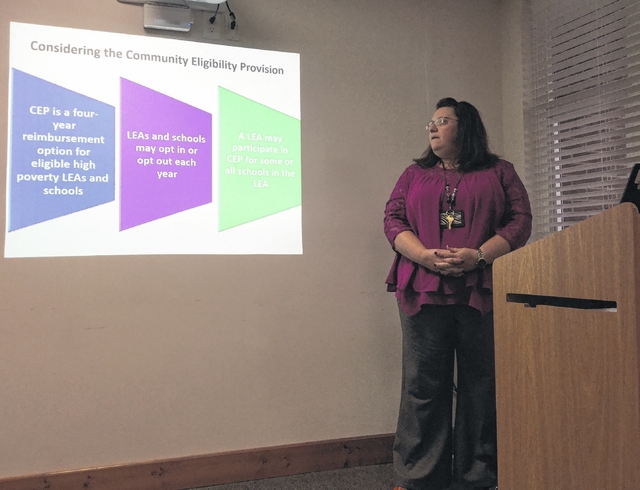Students from Sampson County Schools are a step closer to receiving free meals.
The Community Eligibility Program (CEP) was presented to the Sampson County Schools (SCS) Board of Education during a Tuesday work session. Nutrition Director April Jordan discussed several benefits of the program, which could save parents money in the future.
“It is our recommendation that we approve to start this program Feb. 1,” Jordan said about providing relief to families.
The program’s purpose is to improve access to nutritious meals for students living in high poverty areas by providing meals to students at no cost. A section of the Healthy, Hunger Free Kids Act of 2010 was amended for the National School Lunch Act. The goal is to provide an alternative to household eligibility applications for free and reduced price meals.
Pending approval from the board, all schools in the Sampson County system, with the exception of Sampson Early College, may receive free lunch starting Feb. 1. SECHS does not qualify for the program because breakfast is not served on campus. Schools must serve both breakfast and lunch.
“The magic number is 62.5 percent,” Jordan said. “If you’re below that rate, then it’s a combination of free rate and paid rate.”
As of April 1, 2016 SCS had a free and reduced lunch percentage of 74.55 percent. As of the beginning of the year, that amount has now increased to 76.04 percent.
In the wake of Hurricane Matthew, Sampson County saw an increase in the number of students who are certified by the state. According to Jordan, 1,356 students were declared eligible for payment assistance based on disaster benefits. That was a net gain of more than 800 students.
“Some of those students were already receiving food stamps assistance,” she said. “The others were new folks who were receiving.”
According to district officials, the percentage stands at 58.7 percent, which means that 94 percent of the meals could be claimed at the free rate based on a formula using identified students. Data shows enrollment for Sampson County Schools at 8,271, with 4,862 of those students qualifying for meal assistance.
SCS met several requirements for the program. Some of them include students certified or eligible for participation in the Supplemental Nutrition Assistance Program (SNAP), facing problems with homelessness or non-applicant students approved by the district.
To qualify for the CEP program, districts must agree to provide meals to all students at no cost and maintain a total count of breakfasts and lunches served to students. Districts must also agree not to collect applications for CEP schools. The only applications to be collected would be for the SECHS.
Districts in the program must agree to cover the non-federal costs above the threshold. In April, it cost the district more than $441,000 to run the program. Jordan does not foresee CEP having a major impact on the budget. According to SCS, with a minimal 1 percent increase (70 students) in participation, the district can operate without loss.
“If we get increased participation, we’ll be spending more money on food,” she said. “But we’ll also have the revenue and the participation to offset it.”
The United States Department of Agriculture extended the CEP deadline, since Sampson County was declared a disaster area. Jordan said they would have to reapply in April for 2017-18 school year, but the figures should not change significantly. The application would be good for four years, pending a decision from state lawmakers.
The SCS Board of education is scheduled to make a decision for CEP during its next meeting, which is scheduled for Monday, Jan. 23.

